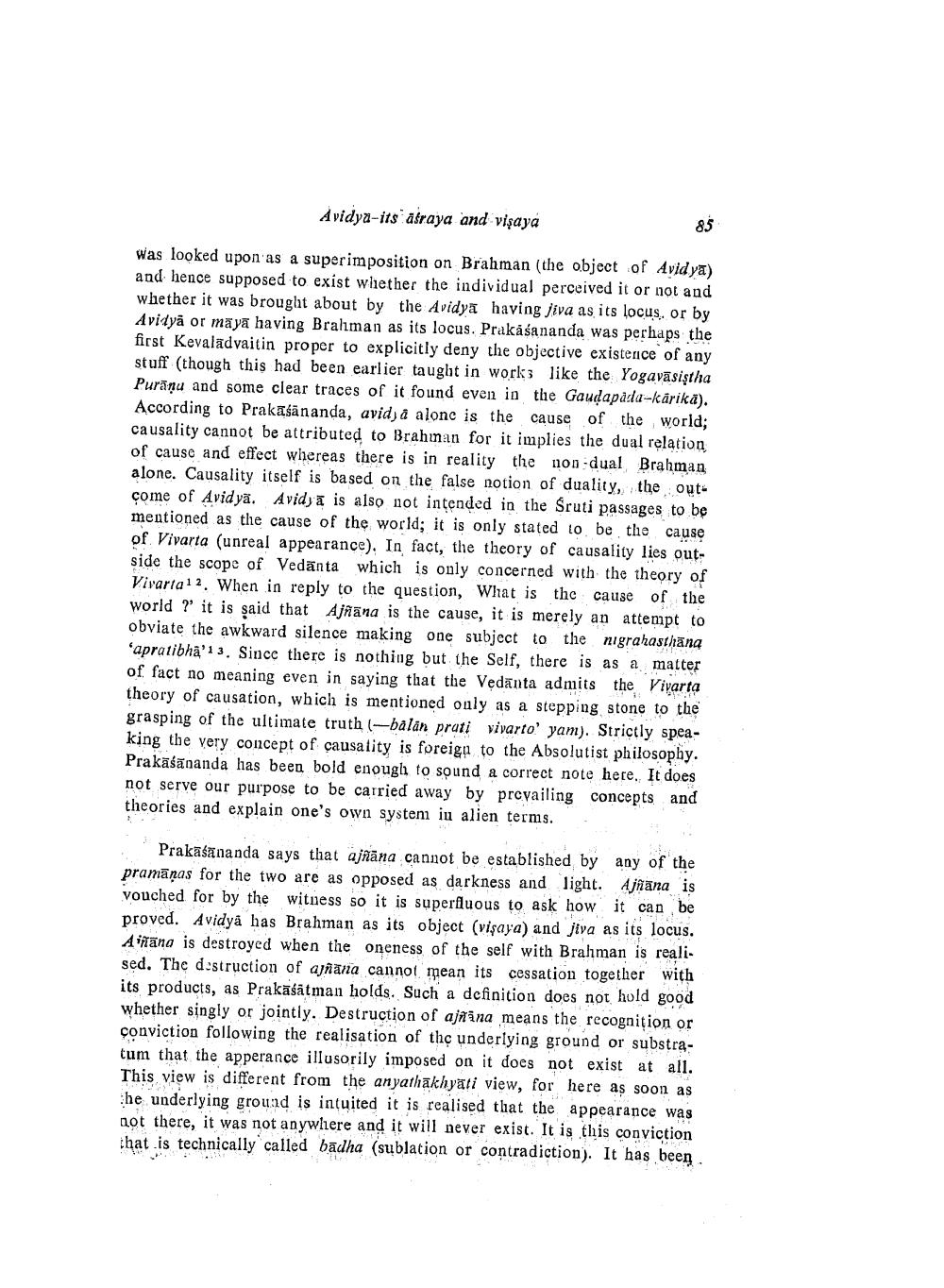________________
Avidya-its afraya and vişaya
was looked upon as a superimposition on Brahman (the object of Avidya) and hence supposed to exist wliether the individual perceived it or not and whether it was brought about by the Avidyā having jiva as its locus, or by Avidyā or māya having Bralıman as its locus. Prakasananda was perhaps the first Kevaladvaitin proper to explicitly deny the objective existence of any stuff (though this had been earlier taught in works like the Yogavāsistha Purāņu and some clear traces of it found even in the Gaudapádla-karika). According to Prakaśānanda, avid å alonc is the cause of the world; causality cannot be attributed to Brahinan for it implies the dual relation of cause and effect whereas there is in reality the non-dual Brahman, alone. Causality itself is based on the false notion of duality, the outçome of Avidya. Avidya is also not intended in the Sruti passages to be mentioned as the cause of the world; it is only stated to be the cause of Vivarta (unreal appearance). In fact, the theory of causality lies outside the scope of Vedanta which is only concerned with the theory of Vivarta12. When in reply to the question, What is the cause of the world ? it is said that Ajnana is the cause, it is merely an attempt to obviate the awkward silence making one subject to the nigrahasthāna ‘apratibha'13. Since there is nothing but the Self, there is as a matter of fact no meaning even in saying that the Vedānta admits the Vivarta theory of causation, which is mentioned only as a stepping stone to the grasping of the ultimate truth (-balan prati vivarto' yam). Strictly speaking the very concept of causality is foreign to the Absolutist philosophy. Prakāśānanda has been bold enough to sound a correct note here. It does not serve our purpose to be carried away by prevailing concepts and theories and explain one's own system iu alien terms.
Prakasananda says that ajñāna cannot be established by any of the pramāņas for the two are as opposed as darkness and light. Ajñāna is vouched for by the witness so it is superfluous to ask how it can be proved. A vidyā has Brahman as its object (vişaya) and jiva as its locus. Aifāna is destroyed when the oneness of the self with Brahman is reali. sed. The destruction of añana cannot mean its cessation together with its products, as Prakāśātman holds. Such a definition does not hold good whether singly or jointly. Destruction of ajñāna means the recognition or conviction following the realisation of the underlying ground or substratum that the apperance illusorily imposed on it does not exist at all. This view is different from the anyathākhyāti view, for here as soon as he underlying ground is intuited it is realised that the appearance was not there, it was not anywhere and it will never exist. It is this conviction that is technically called bādha (sublation or contradiction). It has been




